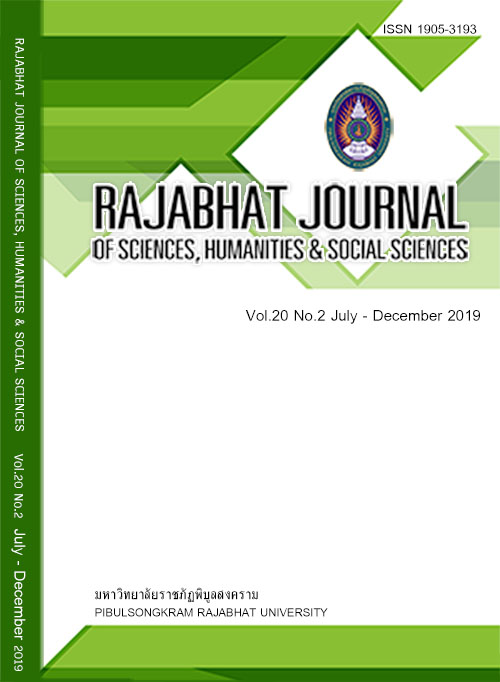RADIATION EXPOSED: A SOCIOLOGICAL INVESTIGATION OF CHERNOBYL
Keywords:
Chernobyl, Ukraine, Childhood, Stigma, Thyroid CancerAbstract
Thirty-three years have passed since the Chernobyl nuclear power plant accident. At 1.23 am. on Saturday, April 26, 1986, the No. 4 nuclear reactor exploded, giving origin to a massive plume of radioactive material in Ukraine. To shed some light on the issue, the author searched on-line databases for up-to-date scientific publications. In addition, he employed in-depth qualitative interviews (QIs) via Skype to highlight the life-stories of 16 Ukrainians who were children at the time of the catastrophe. Findings point to a description of Chernobyl as a biblical apocalypse that destroys life. Importantly, the fallout is still perceived as a living reality and not a dark part of the national history. The reason behind this haunting situation is that the state has failed to provide structural changes within a broad framework concerned to alleviate inequity in health, welfare, and human rights. Hence, a possible cost-effective measure could be the embracement of a grassroots perspective on disaster preparedness, mitigation, and management.
References
Astakhova LN, Anspaugh LR, Beebe GW.et al. Chernobyl-related thyroid cancer in children of Belarus: a case-control study. Japan Radiation Research, 1998; 150(3): 349-356.
Balonov MI. The Chernobyl Forum: major findings and recommendations. Journal of Environmental Radioactivity, 2007; 96(1-3), 6-12.
Biddle L, Cooper J, Owen-Smith A. et al. Qualitative interviewing with vulnerable populations: individuals’ experiences of participating in suicide and self-harm based research. Journal of Affective Disorders, 2013; 145(3): 356-362.
Birioukov A, Meurer M, Peter RU. et al. Male reproductive system in patients exposed to ionizing irradiation in the Chernobyl accident. Journal of Reproductive Systems, 1993; 30(2): 99-104.
Bromet EJ. Emotional consequences of nuclear power plant disasters. Health Phys, 2014; 106(2): 206–210.
Bull R. The investigative interviewing of children and other vulnerable witnesses: Psychological research and working/professional practice. Legal and Criminological Psychology, 2010; 15(1): 5-23.
Cardis E, Hatch M. The Chernobyl accident—an epidemiological perspective .Journal of Clinical Oncology, 2011; 23(4): 251-260.
Davis S, Day RW, Kopecky. et al. Childhood leukemia in Belarus, Russia, and Ukraine following the Chernobyl power station accident: results from an international collaborative population-based case–control study. International Journal of Epidemiology, 2005; 35(2): 386-396.
Erevelles N. Voices of silence: Foucault, disability, and the question of self-determination. Stud Phil Edu, 2002; 21(1): 17-35.
Golden L. The purgation theory of catharsis. The Journal of Aesthetics and Art Criticism, 1973; 31(4): 473-479.
Havenaar JM, De Wilde EJ, Van Den Bout, J, Drottz-Sjöberg, BM, Van Den Brink, W. Perception of risk and subjective health among victims of the Chernobyl disaster. Social Science & Medicine, 2003; 56(3): 569-572.
Holmes-Siedle A, Adams L. Handbook of radiation effects. Oxford: Oxford Univ Press; 1993: 79-90.
Hockenberry-Eaton M, Minick P. Living with cancer: children with extraordinary courage. Oncology Nursing Forum, 1994; 21(6): 1025-1031.
Hundorova T. The canon reversed: New Ukrainian literature of the 1990s. Journal of Ukrainian Studies, 2001; 26(1-2): 249-270.
Kazakov VS, Demidchik Astakhova LN. Thyroid cancer after Chernobyl. Nature Research Journals, 1992; 359(6390): 21-21.
Korblein A. Strontium fallout from Chernobyl and perinatal mortality in Ukraine and Belarus. Radiatsionnaiabiologiia, Radiatsionnaia Biologiia, 2003; 43(2): 197-202.
Kulakov VI, Sokur TN, Volobuev et al. Female reproductive function in areas affected by radiation after the Chernobyl power station accident. Environmental Health Perspectives, 1993; 101(2): 117-123.
Kusow AM. Contesting stigma: On Goffman's assumptions of normative order. Symbolic Interaction, 2004; 27(2): 179-197.
LiVolsi VA. et al. The Chernobyl thyroid cancer experience: pathology. Clinical Oncology, 2011; 23(4): 261-267.
Loganovsky K, Havenaar JM, Tintle NL. et al. The mental health of clean-up workers 18 years after the Chernobyl accident. Psychological Medicine, 2008; 38(4): 481-488.
Loganovsky KN, Loganovskaja TK. 1319–Psychiatric legacy of Chernobyl: Fukushima projections. European Psychiatry, 2013; 28(2): 1-12.
Martin, B. The Chernobyl necklace: the psychosocial experiences of female radiation emergency survivors. Belgeo, 2015; 1, 1-10.
Mettler Jr, FA, Gus’kova AK, Gusev I. Health effects in those with acute radiation sickness from the Chernobyl accident. Health Physics, 2007; 93(5): 462-469.
Mykhaylov V, Zdesenko I. Mental disorders in patients exposed to radiation after Chernobyl Nuclear power plant accident. The Japanese Society of Psychiatry and Neurology, 2013; 3(2): 272-275.
Nikiforov Y, Gnepp DR. Pediatric thyroid cancer after the Chernobyl disaster. Pathomorphologic study of 84 cases (1991–1992) from the Republic of Belarus. Journal of Cancer, 1994; 74(2): 748-766.
Perlin ML. Half-wracked prejudice leaped forth: Sanism, pretextuality, and why and how mental disability law developed as it did. Journal of Contemporary Legal Issues, 1999; 10: 3-15.
Quigley KM. The adult cancer survivor: psychosocial consequences of cure. In Seminars in Oncology Nursing, 1989; 5(1): 63-69.
Rahu M. Health effects of the Chernobyl accident: fears, rumors and the truth. European Journal of Cancer, 2003; 39(3): 295-299.
Rahu M, Tekkel M, Veidebaum T. et al. The Estonian study of Chernobyl cleanup workers: II. Incidence of cancer and mortality. Radiation Research, 1997; 147(5): 653-657.
Schull, WJ. The somatic effects of exposure to atomic radiation: the Japanese experience, 1947–1997. Proceedings of the National Academy of Sciences, 1998; 95(10): 5437-5441.
Spitz DR, Hauer-Jensen M. Ionizing Radiation-induced Responses: Where Free Radical Chemistry Meets Redox Biology and Medicine. Antioxidants & Redox Signaling, 2014; 20 (9): 1407-1409.
Takamura N, Kryshenko N, Masyakin V. et al. Chernobyl-induced radiophobia and the incidence of tuberculosis. The Lancet, 2000; 356(9225): 257.
Thompson J. Writing about trauma: Catharsis or rumination? Philosophy, Journal of Psychology and Psychiatry, 2010; 17(3): 275-277.
Zubovich VK, Petrov GA, Beresten SA. et al. Human milk and babies’ health in the radioactive contaminated areas of Belarus. Journal of Public Health, 1998; 5(2), 28-30.
Weiss MG, Ramakrishna J. Stigma interventions and research for international health. The Lancet, 2006; 367(9509), 536-538.
Williams D, Baverstock K. Too soon for a final diagnosis. Nature, 2006; 440(7087): 993-1020.
Downloads
Published
How to Cite
Issue
Section
License
Each article is copyrighted © by its author(s) and is published under license from the author(s).










